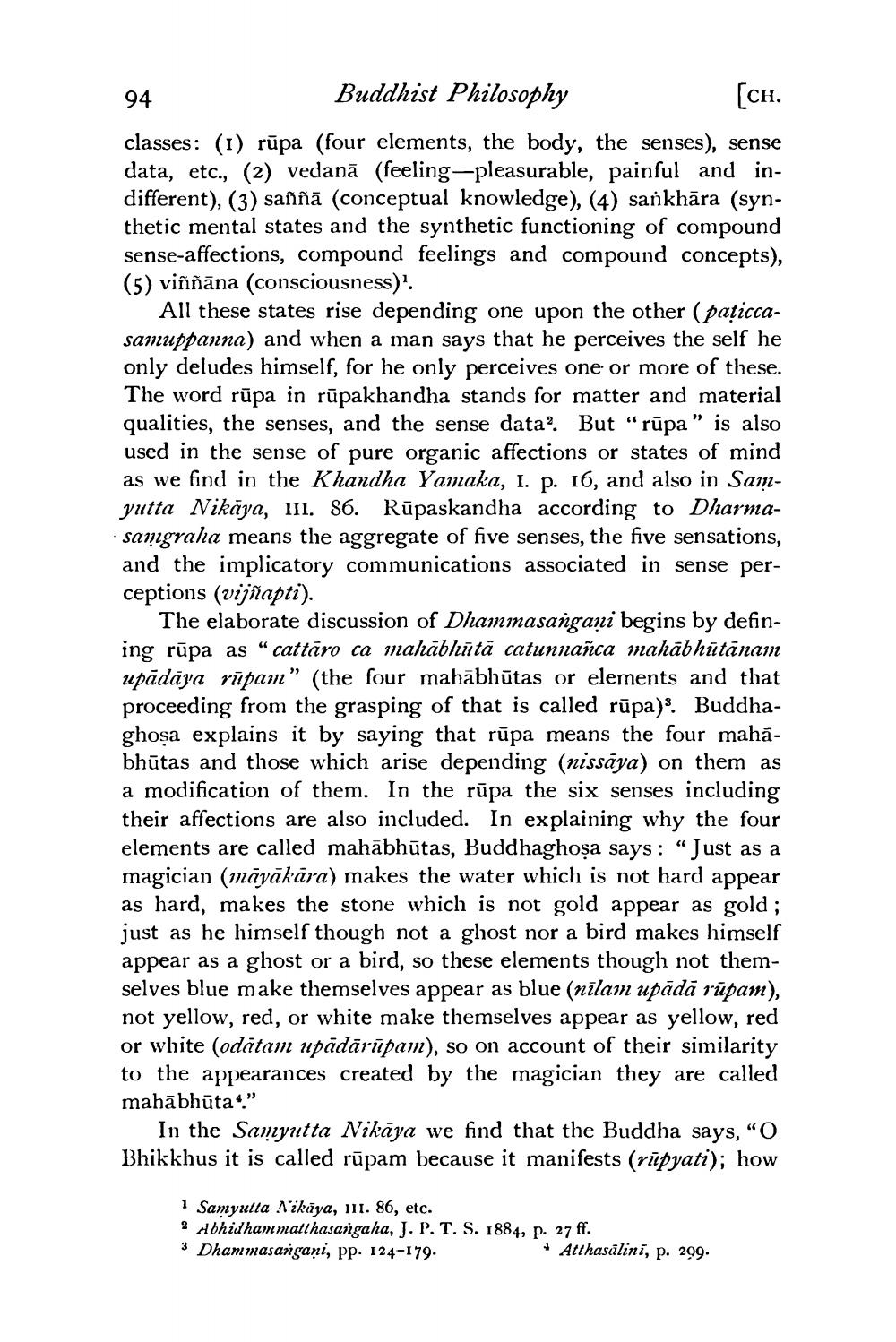________________
Buddhist Philosophy
[CH.
94
classes: (1) rūpa (four elements, the body, the senses), sense data, etc., (2) vedanā (feeling-pleasurable, painful and indifferent), (3) saññā (conceptual knowledge), (4) sankhāra (synthetic mental states and the synthetic functioning of compound sense-affections, compound feelings and compound concepts), (5) viññāna (consciousness)'.
All these states rise depending one upon the other (paticcasamuppanna) and when a man says that he perceives the self he only deludes himself, for he only perceives one or more of these. The word rūpa in rūpakhandha stands for matter and material qualities, the senses, and the sense data2. But "rupa" is also used in the sense of pure organic affections or states of mind as we find in the Khandha Yamaka, I. p. 16, and also in Samyutta Nikaya, III. 86. Rūpaskandha according to Dharmasamgraha means the aggregate of five senses, the five sensations, and the implicatory communications associated in sense perceptions (vijñapti).
The elaborate discussion of Dhammasangani begins by defining rupa as "cattaro ca mahabhuta catunnañca mahabhūtānam upadaya rūpam" (the four mahābhūtas or elements and that proceeding from the grasping of that is called rupa). Buddhaghosa explains it by saying that rupa means the four mahābhūtas and those which arise depending (nissaya) on them as a modification of them. In the rupa the six senses including their affections are also included. In explaining why the four elements are called mahābhūtas, Buddhaghosa says: "Just as a magician (māyākāra) makes the water which is not hard appear as hard, makes the stone which is not gold appear as gold; just as he himself though not a ghost nor a bird makes himself appear as a ghost or a bird, so these elements though not themselves blue make themselves appear as blue (nilam upādā rūpam), not yellow, red, or white make themselves appear as yellow, red or white (odatam upādārūpam), so on account of their similarity to the appearances created by the magician they are called mahābhūta."
In the Samyutta Nikaya we find that the Buddha says, "O Bhikkhus it is called rūpam because it manifests (rūpyati); how
1 Samyutta Nikaya, 111. 86, etc.
2 Abhidhammatthasangaha, J. P. T. S. 1884, p. 27 ff. 3Dhammasangani, pp. 124-179.
Atthasalini, p. 299.




